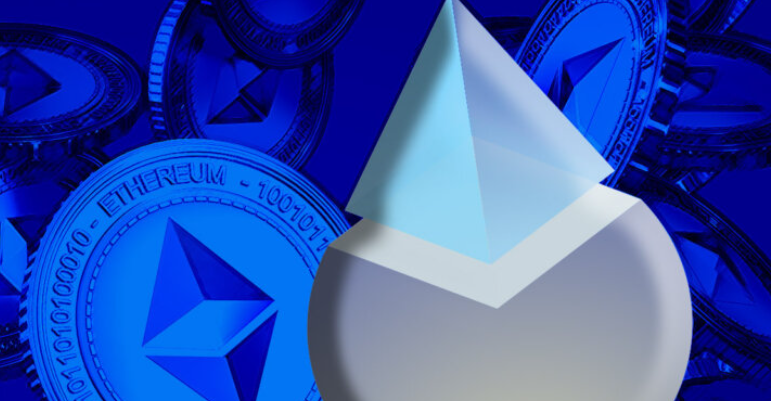Cryptocurrencies present fresh financial prospects that are set to be leveraged by both individual investors and institutional entities. The process of staking plays a crucial role in decentralizing and securing the blockchain, with protocols incentivizing participants through the distribution of new coins. This promise of assured returns appeals to all players in the market. Grayscale has launched the Grayscale Dynamic Income Fund (GDIF), which includes nine Proof-of-Stake blockchains. It’s worth pondering over the blockchains selected by Grayscale and the implications this has for the crypto sector. In the article, we will contemplate the objectives of GDIF and explore why it predominantly features lesser-known projects.
Taking Advantage of The Opportunity
The Digital Currency Group, which operates Foundry USA, the largest Bitcoin pool, and owns Grayscale, has been a significant player in the professionalization of Bitcoin mining. This sector has seen increasing dominance by large, often multinational, corporations. The process of earning rewards from the Bitcoin protocol has proven to be a lucrative business.
Institutions are now recognizing a parallel opportunity in staking. Grayscale has introduced the Grayscale Dynamic Income Fund (GDIF), which incorporates nine Proof-of-Stake blockchains. The fund’s primary goal is to distribute rewards in U.S. dollars quarterly. We will probably see the emergence of other staking funds similar to GDIF shortly.
It’s a pertinent question to consider the impact of institutional investment on Proof-of-Stake (PoS) blockchains. In essence, while it could potentially diminish decentralization by leading to the emergence of new entities possessing a substantial quantity of coins, it could also bolster security by making a 51% attack more expensive.
Coin holders are likely to welcome this, as institutional investment could drive up the market value of PoS coins. However, this comes with its own set of risks. Institutions have the power to inflate coin prices through purchases, but they can also cause prices to plummet if they lose interest in a specific project. But is there a compelling reason to halt staking? We’ll delve deeper into this topic later.
The operation of the staking fund is such that investors commit their capital. The capital is then invested by Grayscale into a variety of PoS tokens. It’s important to note that not all the chosen blockchains employ the PoS consensus. It suffices that they offer some form of reward. Grayscale stakes these tokens and earns rewards in the form of new tokens. These staking rewards are sold weekly to generate USD. Grayscale then pays its customers in USD rewards quarterly.
Grayscale shields its customers from the complexities tied to staking, including the self-custody of assets. Investors are only required to supply the capital and in return, they receive regular rewards from the PoS portfolio managed by Grayscale.
Which PoS Blockchains Did Grayscale Choose For Staking?
Out of the top 10 blockchains, Grayscale has selected only two for its staking fund, specifically Ethereum (Coinbase Staked CBETH) and Solana (SOL). The fund also includes other projects such as Aptos (APT), Celestia (TIA), Cosmos (ATOM), Near (NEAR), Osmosis (OSMO), Polkadot (DOT), and SEI Network (SEI).
The non-inclusion of ADA in Grayscale’s fund came as a surprise to the Cardano community, possibly due to its relatively low staking yield of around 3%.
Upon examining the current reward rates on the StakingRewards portal, it was found that among the projects included in the fund, Ethereum has the lowest yield at 3.73%. Sei follows closely with a yield of 4.41%. All other chosen projects boast a yield exceeding 7%, with Cosmos and Celestika offering the highest staking rewards, yielding over 16%.
Interestingly, BSC, which ranks in the top 10, was not included in the fund, potentially due to a low yield similar to Cardano. Additionally, the well-known projects Avalanche and Algorand, despite having a higher yield than Ethereum, were also not included in the fund.
The information suggests that the primary objective of the fund is to maximize staking rewards in the shortest possible timeframe, with less consideration given to other project-specific metrics or details.
A significant 58% of the portfolio is made up of just three projects. OSMO holds the largest portion with a yield of 16.52%. SOL comes in second with a yield of 7.41%, followed by Polkadot with a yield of 10.76%.
All other projects, including Ethereum, which boasts the highest market cap among PoS blockchains, fall under the ‘Others’ category. It’s clear that yield is a more influential factor in portfolio construction than other aspects such as market capitalization, adoption rate, Total Value Locked (TVL), user base, community, and so on.
We estimate that Ethereum may only have something like 5% in the portfolio.
Demand And Scarcity Is More Important Than Yield From Staking
The Grayscale staking fund isn’t necessarily designed to include the highest quality projects with massive success potential in its portfolio. It appears that the primary purpose of GDIF is to extract value, specifically staking rewards, which in turn generate profits for investors. From a network perspective, this approach enhances security at the expense of decentralization.
It’s not constructive to view the fund from the perspective that PoS blockchains, which didn’t make it into the portfolio or have minimal representation, are inferior or lack potential.
It’s safe to say that fund managers are cognizant of the fact that demand plays a significant role in the pricing of coins. The demand for coins from the top 10 projects will undoubtedly exceed that for relatively unknown projects whose only advantage is high staking reward yields.
Staking funds can contribute to the growth of the market value of these blockchain coins, potentially attracting new retail investors. However, this alone may not guarantee the platform’s success in terms of DeFi adoption, user base, Total Value Locked (TVL), and so on.
Another crucial aspect to consider is the monetary policy of these projects.
Projects offering high staking rewards typically have an infinite coin inflation policy in place. This implies that the scarcity of coins, particularly in the future, will be lower compared to projects like Cardano, which has a capped supply of 45 billion ADA coins.
Solana is an inflationary cryptocurrency with no hard cap on the total number of tokens. It has a starting annual inflation rate of 8%, which will decrease by 15% every year until it reaches 1.5%, which will be the fixed long-term rate.
Polkadot is inflationary, with a fixed annual inflation of 10%, and doesn’t have a maximum supply.
It’s important to understand the origins of the high staking yields of projects that have been incorporated into GDIF. Often, these are a result of never-ending inflation with a high initial rate, a strategy that many emerging staking funds are likely to adopt.
Imagine launching a new PoS blockchain with a low market cap and high staking rewards, say around 20%. By selling a significant portion of the coins to funds at a substantial discount, you can pique their interest. This might ensure that the blockchain will be included in the staking funds.
This strategy bears a striking resemblance to airdrops, albeit more sophisticated. It’s essentially a means to garner attention.
However, this system is bound to reach an economic impasse sooner or later. If inflation is excessively high, the market value of the coins will plummet to such an extent that it will no longer be appealing despite the high staking rewards. If inflation diminishes over time, as is the case with Solana for instance, it will eventually lose its allure for staking funds. However, coins may be of interest to a fund with a different focus.
GDIF is exclusively accessible to investors with a minimum of 1.1M USD.
Consider a scenario where an investor purchases 1M coins of a certain PoS blockchain for 1M USD. With a staking yield of 20%, the investor stands to make an annual profit of 200K USD, which is quite impressive. However, this is contingent on the project maintaining the market value of its coins in the long run, even in a bear market, which is unlikely. If the coin’s value drops to 0.20 USD, the investor not only suffers an 80% loss on their deposit, but the staking yield also diminishes. The income would then be a mere 40K USD, translating to an annual return of just 4% on the invested funds.
For staking rewards to remain appealing to investors in the long term, they must align with the demand for coins. Alternatively, in a bear market, it may be more profitable to hold onto the coins and wait for the next bull market. But that would mean not having regular low USD rewards in the bear market.
An institution will likely discontinue staking coins and withdraw from a specific project under conditions of low yields. Low yields often reflect a diminished demand for coins. If a substantial segment of the community and users lose confidence in the project, the value of the coins will likely decrease.
From our perspective, what GDIF seems to miss is the long-term potential for market capitalization growth of the projects. The fund is likely to perform well only in the forthcoming bull market. During a bear market, it may not garner much interest, as it might not be worthwhile to endure a significant drop in the portfolio’s value for the sake of relatively low quarterly USD rewards.
The approach of funds should mirror that of BTC miners. They should sell only the bare minimum amount of coins necessary to cover costs during a bear market and wait for a bull market, where selling the coins would be more profitable.
Long-term holders have reaped the greatest benefits from BTC, and the same principle will hold for PoS platforms. Those who accurately gauge a project’s potential stand to gain the most from staking. Their profits will stem not only from an increase in the project’s market capitalization but also from the cash flow that PoS projects generate.
Conclusion
As per the Edinburgh Decentralization Index (EDI), Cardano ranks as the most decentralized blockchain among the top 10. It offers secure staking without the need for third parties, unlike Ethereum. Cardano boasts a large and dedicated community with approximately 1.4 million stakers. Despite these attributes, Grayscale seems uninterested, likely due to the staking yield being only 3%.
Cardano’s staking rewards are currently about half of their potential value, given the higher number of undersaturated pools compared to the K parameter, which is presently set at 500. Ideally, there should be 500 fully saturated pools.
It’s uncertain whether Grayscale’s portfolio managers fully comprehend the monetary policies of blockchain projects. They appear to favor high coin inflation over coin scarcity and seem to prioritize short-term gains over long-term yields derived from technological advancement.
We believe that long-term holders, who acquired coins at a low cost and accumulated staking rewards during a bear market (or several), will eventually sell when the market value of the coins significantly surpasses the purchase value at which early adopters bought them. They can start selling only the regular staking rewards and keep the majority of coins. It will be a passive income for them. The scarcity of ADA coins lends credence to this view. While it’s possible to continually create new blockchains with high coin inflation, this approach may soon lose its momentum. The market value of a coin will invariably mirror the success of its protocol. We think that Cardano will, in due course, find its place in the portfolios of staking funds.
 English
English
 Deutsch
Deutsch
 Español
Español
 Français
Français
 Português
Português
 日本
日本
 한국인
한국인
 Türkçe
Türkçe
 Русский
Русский
 Tiếng Việt
Tiếng Việt














